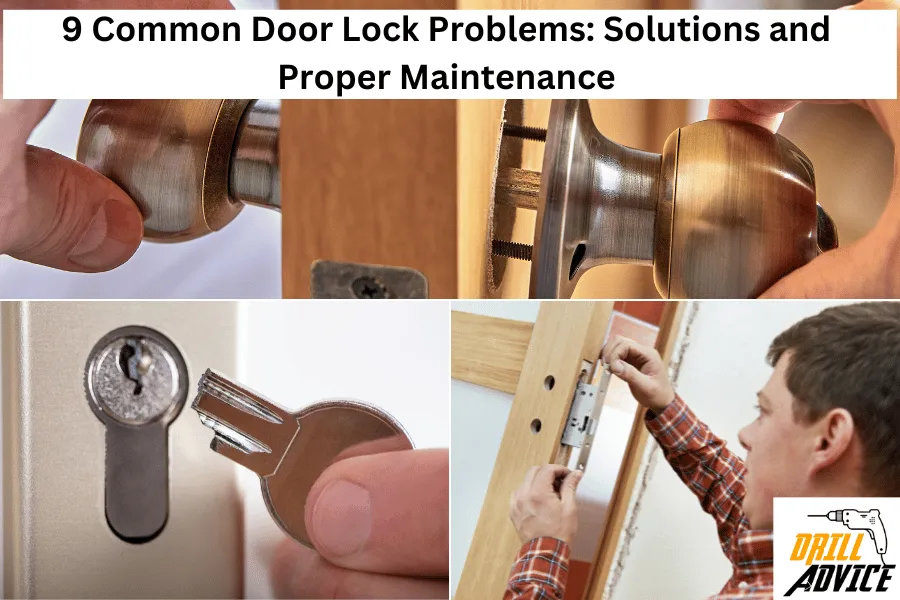
A door lock is a mechanical or electronic device that can secure a door by preventing unauthorized access while allowing access to those with the correct key or access code. Door locks can be operated with traditional keys or through electronic keycards or digital codes in the smart locks. When the door lock is not operated properly, it can be a problem.
These are the most common 9 door lock problems such as sticking lock, difficulty turning key, misaligned door latch, key broken inside lock, door lock loose, deadbolt is not extending, door knob or handle loose, faulty lock mechanism and electronic issues in the electric lock. You can avoid these door lock problems by maintaining the door lock properly by following these factors. You should do regular maintenance, lubricating, inspecting the keys and lock, tightening the hardware, updating the security features and check for the battery status in the electric lock.
What are the 9 Common Door Lock Problems and Solutions?
These are the 9 common door lock problems. It can occur in any type of doors in the home.
1. Sticking Locks

Sticking lock is a common problem where the lock mechanism does not operate smoothly. It usually takes considerable effort to lock or unlock the door.
Reason: Sticking locks occur due to accumulated dirt, grime, or rust inside the lock. Fluctuating temperatures can also cause the metal components to expand or contract that cause to sticking issues.
Solution: To fix sticking locks, you can clean the lock cylinder using a specific lock cleaner or a mild cleaner to remove dirt and grime. If there is any rust issue, you can use a rust remover. After cleaning, apply a suitable lubricant to facilitate smooth operation.
2. Difficulty Turning the Key
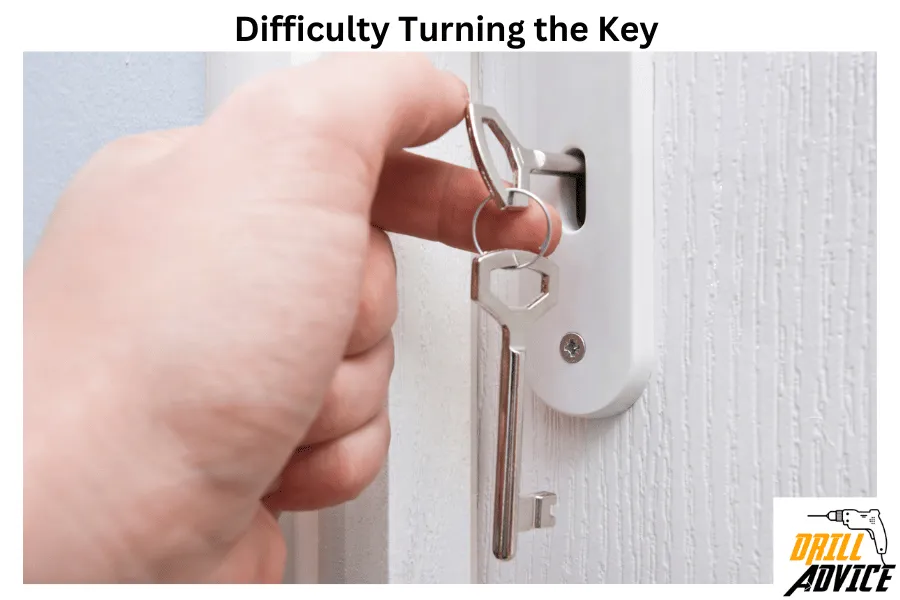
Key turing is difficult in the key hole when you need to lock or unlock the door. This can be a happened due to these reasons..
Reason: Difficulty turning the key can occur due to a worn-out key, a warped door, or internal damages within the lock cylinder. Additionally, it might be because the lock components have misaligned over time due to frequent usage.
Solution: You can solve difficulty turning the key problem by using a graphite lubricant to reduce friction inside the lock. If the problem persists, you may need to replace the key or adjust the door and frame to realign the components properly.
3. Misaligned Door Latch
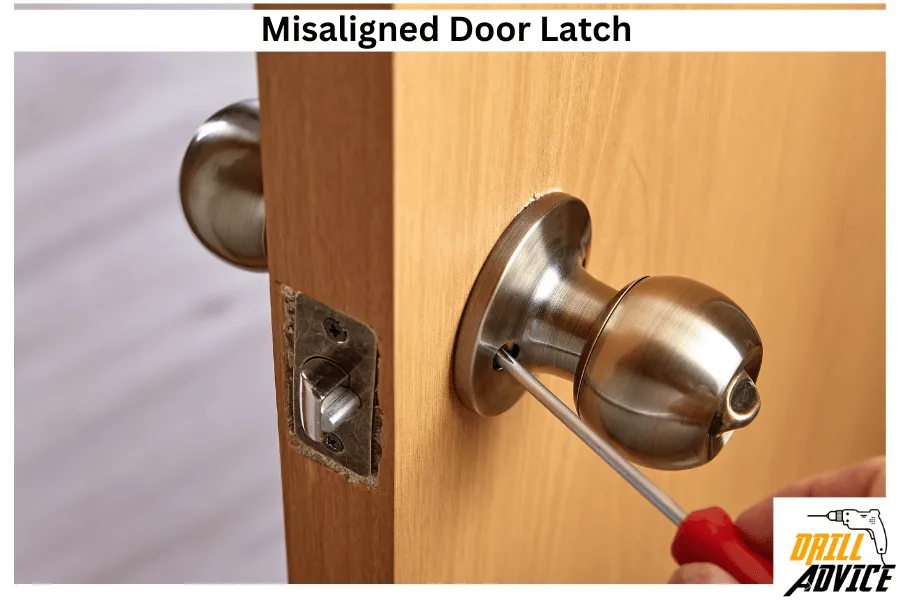
A misaligned door latch does not properly align with the strike plate on the door frame. It prevent the door from secure closing.
Reason: Door latch can be misaligned due to changes in humidity levels which cause the door frame to warp. The settling of the house foundation can also be a reason behind this misalignment.
Solution: In order to fixthe misaligned door latch you should try adjusting the strike plate to align with the latch. If that doesn’t work, you might have to reposition the door latch or possibly plane the door for a proper fit. In some cases, installing a new latch that aligns with the existing strike plate can be the suitable solution.
4. Key Broken Inside the Lock
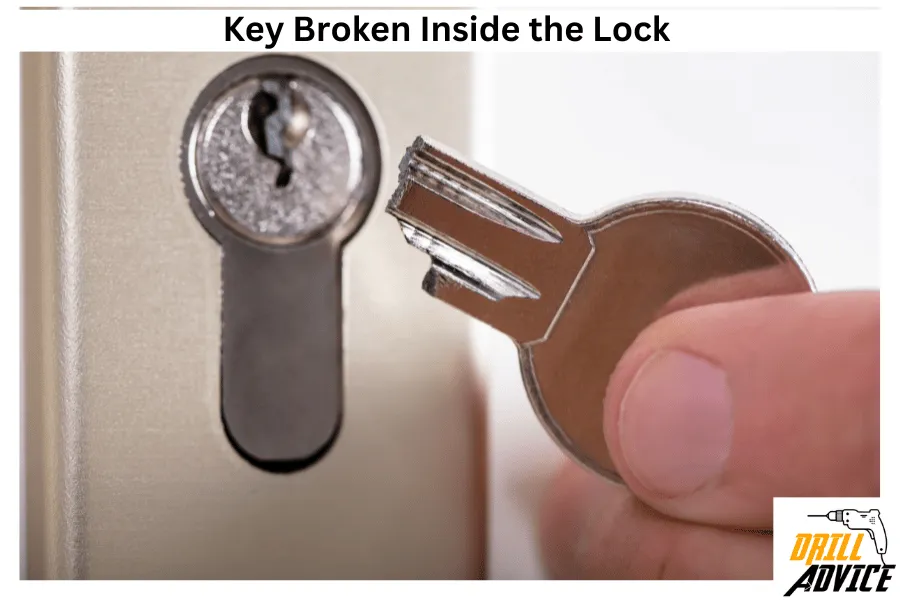
This problem occurs when a portion of the key breaks off and remains inside the lock. After it is broken, it is impossible to insert another key or unlock the door.
Reason: The main reasons the key is broken inside the lock are using a weakened or damaged key, applying excessive force when turning the key, or a malfunction within the lock mechanism which puts added stress on the key.
Solution: To solve this problem, you can use needle-nose pliers or a broken key extractor tool to carefully remove the broken piece from the lock. If unsuccessful, you may need to call a professional locksmith. To prevent future occurrences, ensure to use keys in good condition and service the lock regularly to keep the mechanism smooth.
5. Door Lock is Loose or Wobbly
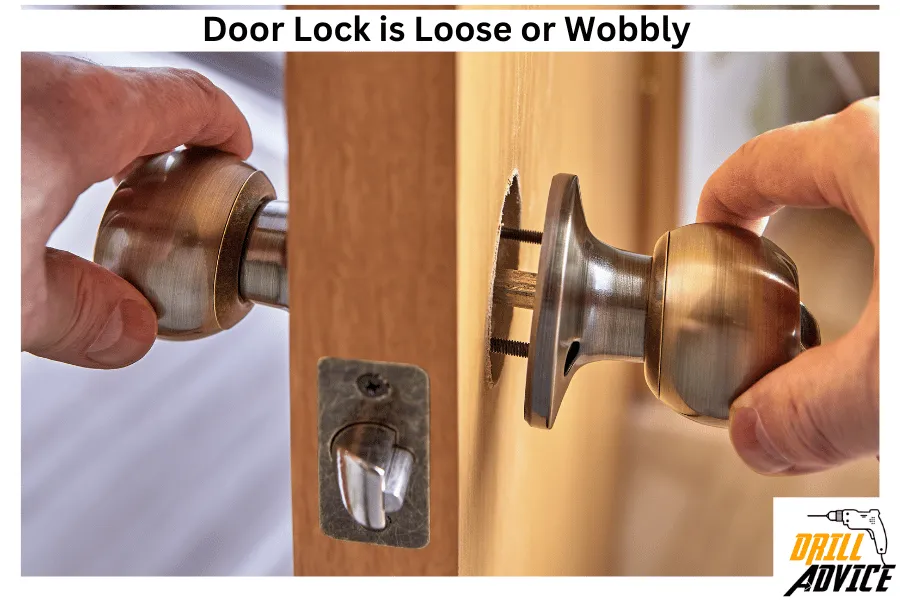
A loose or wobbly door lock indicates that the lock is not securely fitted to the door, which might compromise the security of the door.
Reason: The door lock can be loose or wobble due to prolonged use where the screws have loosened over time, or it may be a result of an improper installation where the lock has not been fixed tightly onto the door.
Solution: To fix a loose or wobbly lock, first, try tightening the screws securing the lock to the door. If the problem persists, it might be necessary to remove the lock and reinstall it properly, ensuring all components are tight and secure. If the lock is old, consider replacing it with a new one that provides a firmer fit.
6. Deadbolt is Not Extending Fully

This issue is when the deadbolt does not fully extend into the strike plate, thus not securing the door properly.
Reason: The primary reasons behind this problem can be a misaligned door or a warped frame, causing the bolt not to align correctly with the hole in the strike plate. It might also be due to accumulated dirt or grime in the bolt mechanism, restricting its movement.
Solution: Firstly, check for any obstructions or accumulations in the bolt mechanism and clean it if necessary. If misalignment is the issue, adjust the strike plate to align correctly with the bolt. In cases where the door frame is warped, you might need to undertake repairs to ensure a proper fit. Ensure to maintain the lock mechanism regularly to prevent such issues in the future.
7. Door Knob or Handle is Loose
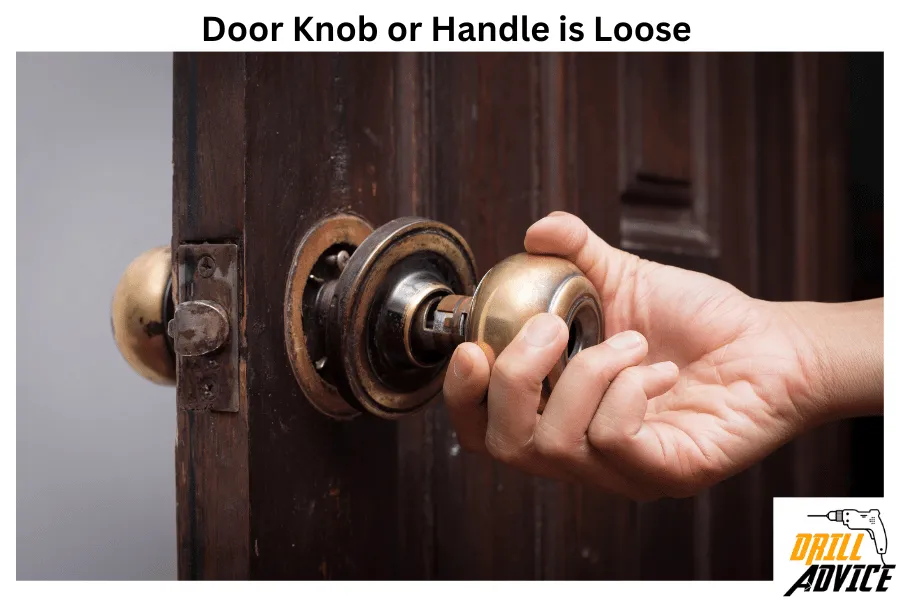
When the door knob or handle moves freely or with a wobbly motion, potentially compromising the ability to open or close the door properly.
Reason: Door knob or handle is loose due to wear and tear over time, which can lead to loosened screws or internal components. Sometimes, it can be a result of improper installation.
Solution: To fix the door knob or handle, first tighten any visible screws on the knob or handle. If the issue persists, you might need to dismantle the knob or handle to inspect internal components and secure or replace them as necessary.
8. Faulty Lock Mechanism
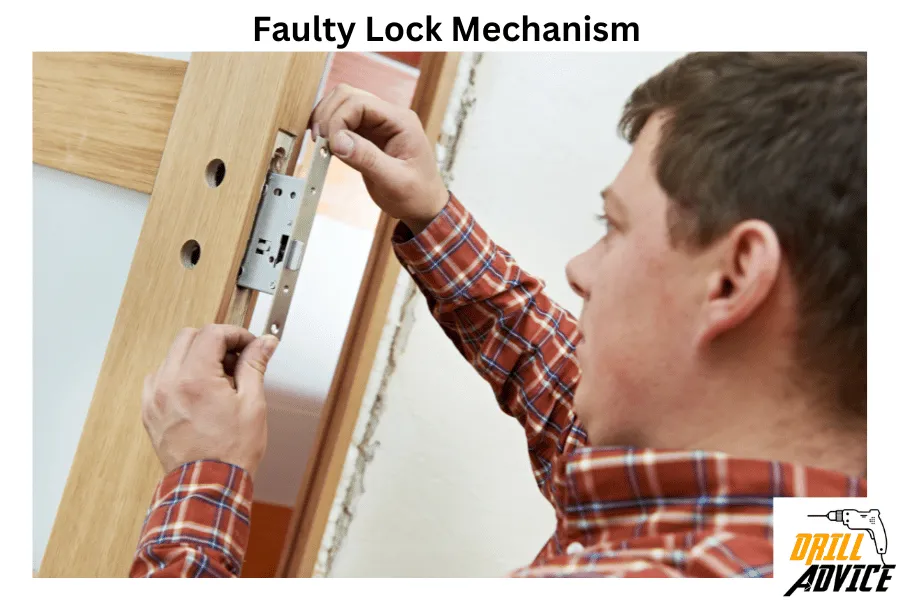
A faulty lock mechanism is considered a malfunction in the internal components of the lock, A Faulty lock mechanism can make it difficult to lock or unlock the door as intended.
Reason: A faulty lock mechanism can be occur due to a variety of factors, including wear and tear over time, a buildup of dirt and grime inside the mechanism, or the use of a wrong or damaged key which might have altered the internal setup.
Solution: Firstly, clean the lock mechanism thoroughly using appropriate cleaning agents to remove any dirt or grime. If cleaning does not resolve the issue, it might be necessary to replace the lock mechanism entirely.
9. Issues with Electronic or Smart Locks
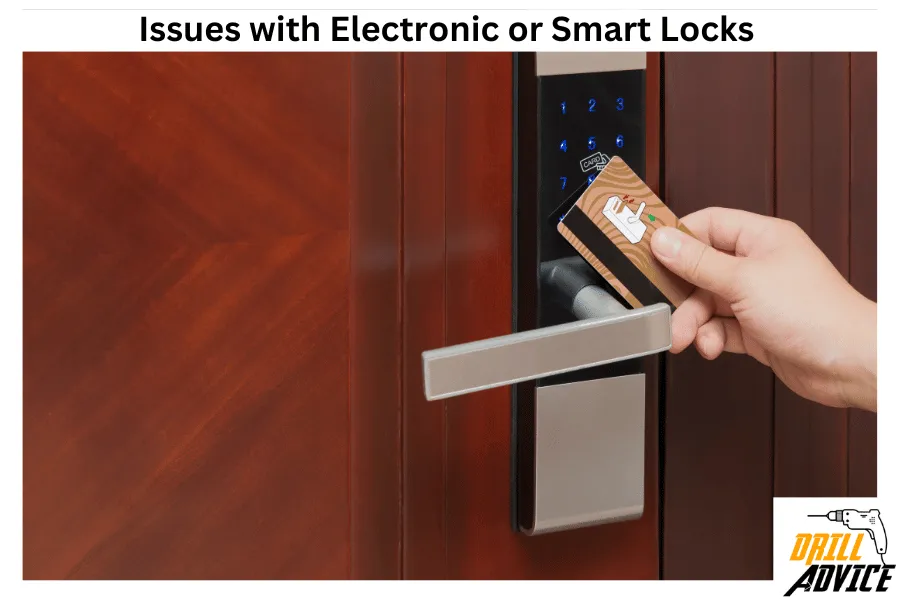
Smart doors consist of sensors and electronic systems. These systems can be damaged due to water, insect and grit materials. If the smart lock is not working, there is no way to operate it manually from outside.
Reason: Smart locks can be damaged due to various reasons like insects, water, software glitches, depleted battery power, improper installation, or connectivity issues in case of smart locks linked to a network.
Solution: Firstly, ensure that the lock has sufficient power and that the software is up to date. If it is a connectivity issue, check the network connection and reset if necessary. For more persistent issues, you might need to reset the lock to its factory settings or consult with the manufacturer’s support for assistance.
How to Maintenance a Door Lock Properly?
You should maintenance all types of door locks by following the below step by step guide.
- Regular Cleaning: Clean the lock surface and the surrounding area to prevent the buildup of dirt and grime which can interfere with the lock mechanism. You should use a mild cleaner for this purpose.
- Lubrication: Lubricate the door lock cylinder at least once a year with a graphite lubricant to ensure smooth operation. You should avoid using oil-based lubricants as they can attract dirt.
- Inspecting the Key: Regularly inspect the keys for wear and tear. If you find any, replace them promptly to prevent issues like key breakage inside the lock.
- Professional Inspection: Have a professional locksmith inspect the lock every few years to identify and rectify any internal wear or malfunctions before they become a major issue.
- Tightening the Hardware: Periodically check the screws and hardware to ensure they are tight and secure. Loose hardware can affect the alignment and operation of the lock.
- Updating Security Features: For electronic or smart locks, keep the software updated to the latest version to ensure optimal functionality and security.
- Battery Check: If your lock is battery-operated, ensure to replace the batteries as recommended by the manufacturer to prevent lockouts.
